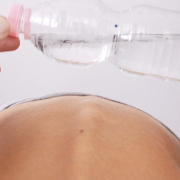Immediate vs Gradual Brace Weaning Protocols in Adolescent Idiopathic Scoliosis: A Randomized Clinical Trial
Prudence Wing Hang Cheung, Oi Kiu Olivia Chan, Hao Wu, Marcus Kin Long Lai, Lester Po Kwan Wong, Shiyu Tang, Jason Pui Yin Cheung
JAMA Pediatr. 2024 Jul 1;178(7):657-668.doi: 10.1001/jamapediatrics.2024.1484
Abstract
Importance: Lack of evidence and consensus for brace weaning protocol in adolescent idiopathic scoliosis (AIS) results in clinicians prescribing gradual weaning in the hope of avoiding curve deterioration after weaning. However, gradual weaning contributes to prolonged brace wear, which can affect spinal stiffness and health-related quality of life (HRQoL).
Objective: To determine whether gradual weaning results in better curve magnitude and truncal balance maintenance after brace weaning vs immediate brace removal for patients with AIS.
Design, setting, and participants: This was an open-labeled randomized clinical trial commenced in April 2017 with 24-month follow-up completed in January 2023. Outcome assessors were masked to weaning protocol assigned. The study took place at a territory-wide tertiary scoliosis clinic serving the largest number of referrals in the local population. Patients with AIS ready to wean off of brace wear were eligible (402 were screened; 33 were excluded [15 for <18 hours/day of brace-wear compliance before weaning, 11 were treated with Milwaukee brace, and 7 declined to participate]; and 369 were included), and those who were treated with a custom molded thoracolumbosacral orthosis and had reached skeletal maturity were consecutively recruited.
Interventions: Patients were randomized to gradual weaning protocol (n = 176) with an additional 6 months of nighttime wear before completely stopping or immediate weaning protocol (n = 193) with immediate brace removal at recruitment.
Main outcomes and measures: Changes in major curve Cobb angle and truncal balance from the time of weaning to 6-month, 12-month, and 24-month follow-up. HRQoL was also assessed using the refined Scoliosis Research Society 22-item and EuroQol 5-dimension questionnaires.
Results: A total of 369 patients (mean [SD] age, 14.9 [1.1] years; 304 [83.4%] girls) were randomized with 284 (77.0%) completing 24-month longitudinal follow-up. Immediate and gradual weaning groups had no significant differences in change of major Cobb angle at postweaning 6-month (difference, -0.6°; 95% CI, -1.4 to 0.2; P = .17), 12-month (difference, -0.3°; 95% CI, -1.2 to 0.6; P = .47), and 24-month (difference, -0.3°; 95% CI, -1.2 to 0.7; P = .60) follow-up. The number of curve progression, nonprogression, and rebound cases were comparable (χ22 = 2.123; P = .35). Postweaning changes in truncal balance and HRQoL demonstrated no significant differences between groups.
Conclusions: Gradual weaning did not demonstrate superiority to immediate weaning with predefined criteria of Cobb angle and truncal balance maintenance and HRQoL after brace weaning. Gradual and immediate weaning achieved very similar maintenance of brace outcomes in AIS. We therefore recommend the consideration of immediate brace weaning, which aims to benefit patients with earlier time for increased exercises and activity level.
Trial registration: ClinicalTrials.gov Identifier: NCT03329716.





Leave a Reply
Want to join the discussion?Feel free to contribute!